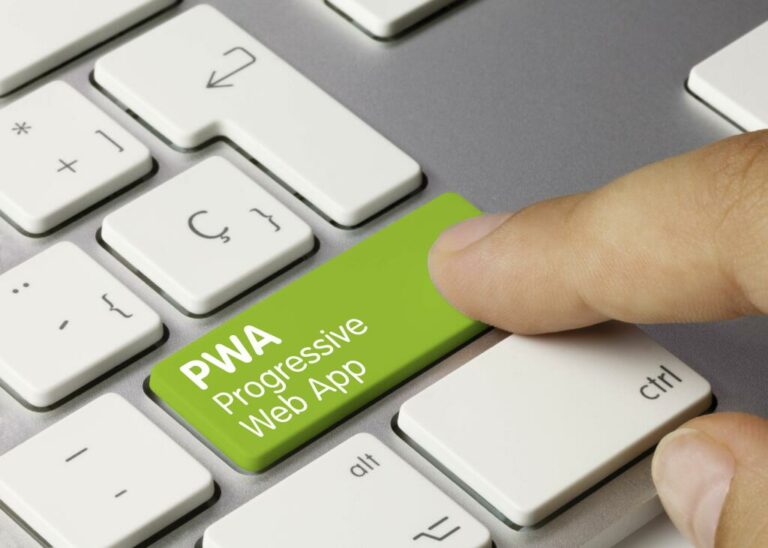Many companies get caught up looking for the perfect solution, only to dedicate an exorbitant number of resources to implementing something that ultimately doesn’t work. My advice would be to run small pilots with the solution or service before fully embedding it into your processes or committing the resources. Once your team feels confident in its value, you can begin to scale while simultaneously iterating on your processes to work out the kinks and ensure success. By using Lightspeed Restaurant POS + Payments and other accompanying tools such as built-in reporting, Maynard was able to streamline their processes and save more than two hours a day. The solution has allowed them to simplify their operations and drive efficiency.
Embedded finance makes Better analytics and data collection possible for businesses. Real-time updates and thorough reporting are accessible because of the technology involved. Embedded finance is significant as it offers a line of credit customers can use online conveniently. Embedded finance helps deliver more efficient and innovative services on B2C (the consumer side).
Learn more about PayJunction’s embedded payments model.
One possibility is that banking as a service and API banking become as ubiquitous as online or mobile banking, a channel that every bank must build and maintain. In that world, achieving long-term differentiation with BaaS will be difficult, so banks will continue to distinguish themselves based on products, rates, reach, and other dimensions. Another possibility is that the market will be prone to returns to scale, much as cloud computing is dominated by big players. If this winner-take-all dynamic prevails, a few BaaS providers that are ahead of the pack in technology, analytics, and cost structure will likely form insurmountable advantages in the space. The opportunity for financial services to expand into previously non-financial areas is unprecedented—and still in the very early stages. This financial transformation will continue to gain strength across nearly every sector as more companies adopt embedded finance and as consumers become more comfortable with these services.

As a result, many companies are seeking to acquire customers more efficiently and earn more revenue from existing users. It offers an insurance program that lets people purchase the appropriate amount of coverage nearly instantly. Insurance available directly from Tesla also tends to cost less than a policy from a third-party insurance provider. Embedded insurance programs eliminate the insurance agent or broker from the process of purchasing an insurance policy. Traditionally, buying insurance was required for purchasing a car or home. To speed things up and increase their bottom lines, some companies have found ways to embed the action of applying for an insurance policy into the process of making a major purchase.
Seamless transactions
→ Using Plaid IDV and Transfer, embedded finance startups can safely and securely gain access to the financial and identification data they need to onboard new customers and fund accounts. Because payments are provided by multiple vendors, there needs to be an integration for each. This often results in disjointed user experiences, lack of data insight, and the platform having less control of the user experience. They uplift the user experience and reduce the vendors users need by at least one, since they no longer need to choose or manage a payments provider.

Today, the story has shifted to nearly every software company becoming a payments company. That’s, of course, an oversimplification, but it’s not an exaggeration to suggest that companies from nearly every sector are actively looking into how to embed payments in their offerings. Embedded payment can also refer to tools like Zelle, which is embedded in banking apps and allows peer-to-peer cash transfers. Not only does this deepen the software provider’s relationships with these customers, it helps them offer a better experience.
If I build a financial product in-house, is that embedded finance?
Now, with fintech platforms such as Ramp and Divvy, businesses can more easily get their own business credit cards and offer them to all employees. Embedded payments can also give consumers the option to pay directly from their bank accounts while saving merchants on fees. Taking out a credit card and entering the number is a friction point that can cause consumers to abandon a digital purchase. Embedded payments embedded payments examples make this process easier by connecting and saving a payment method for later use at the click of a button. The Starbucks app, for example, saves credit or debit card information for 1-click payments while customers earn points for using the app. Lightspeed was able to provide its users with better offerings, build a stronger differentiation from competitors, and open up new revenue streams with embedded payments.
- The rates of third-party payment processors show this benchmark as the level at which fees paid out eclipse the cost of an embedded payment platform.
- Put simply, embedded payment systems operate via open APIs that ’embed’ an upstream payment processing tool within a different app or website.
- We see six trends in the embedded-finance and banking-as-a-service arena.
- The company offers processing and card issues, BIN sponsorship, white label options, and all types of cards, including debit, prepaid, credit, corporate, and consumer cards for any business.
- Effective embedded finance solutions meet the customer where they are with a financial option they need, whether that be a loan, payment program, insurance plan, or easy way to make a payment.
- You get it right then, and then you can make these monthly payments through a firm, and that’s offered up to you at checkout,” Abdulrazaaq said.
- However, unlike embedded payments, the two systems are connected by APIs.
Embedded banking examples include the debit card from Lyft, which lets drivers instantly get paid by the ride-share company. One wildly successful example of embedded payments is the Starbucks app, which holds more customer money than many banks. When users transfer cash to the app, the funds can only be used for purchases from Starbucks. The result is that Starbucks owns the whole transaction, improving payment processing costs. The coffee chain incentivizes the use of its closed-loop payments system by offering rewards.
What is embedded banking?
With embedded payments, Stripe helps platforms grow with an emphasis on efficiency, cost savings, ease of upstart integration, and high degrees of both customization and scalability. Connect, Stripe’s core payments software, is an easy and flexible way for platforms to quickly enable their users in 35+ countries to accept payments within their platform and receive payouts in minutes. Efficient, high-functioning payment solutions on platforms answer a growing need in the market.
Now, that might be a bit of an exaggeration considering the complexity of managing corporate finances compared to your personal spending—but there’s certainly room for improvement. Whether you’re a Fintech company, a loan provider, or a financial institution, Wallester services can benefit you. Creating a successful embedded finance strategy that meets the demands of your business is the first step. This entails assessing your digital requirements and choosing the tools you wish to integrate. The effort, time, and risk involved in creating and maintaining a native version of the service are arduous for enterprises without a BaaS provider.
Payfac-as-a-service model of embedded payments
Applications that integrate stock market investing like Robinhood, Acorns and Cash App are examples of embedded investment companies. Buying, selling and trading stocks can happen without leaving the app or working with an investment adviser. The key in modernizing your operation is to not be afraid of trial and error.

Platforms looking to evolve their product suite by offering native payments can go about it in different ways. They can choose an out-of-the-box embedded payments solution, or create a fully tailored setup. What setup your platform chooses, comes down to how much risk and responsibility you want to take on.
✅ Increased Convenience
This model is costly, time-consuming for both your users and your platform. You get it right then, and then you can make these monthly payments through a firm, and that’s offered up to you at checkout,” Abdulrazaaq said. “The benefit for the customer is you don’t have to re-put in your credit card number. You don’t have to trust a third party that you don’t know with your personal information, but you’re able to check out seamlessly,” Abdulrazaaq said. GoCardless is a global payments solution that helps you automate payment collection, cutting down on the amount of financial admin your team needs to deal with.
